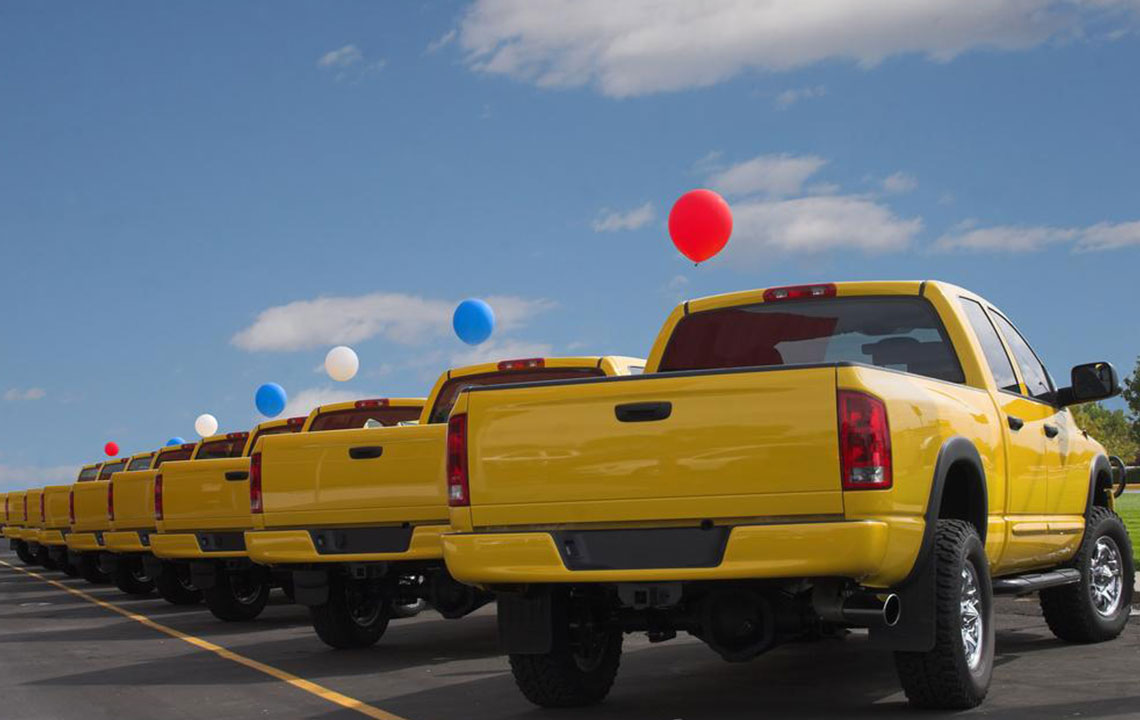Comprehensive Guide to Earning Your Commercial Driver's License (CDL)
This comprehensive guide provides detailed insights into obtaining a Commercial Driver's License (CDL), covering eligibility, training, licensing types, costs, and career prospects. Whether you aim to drive big trucks or buses, start your journey in commercial transportation today with expert advice and practical steps for a successful career. Explore how CDL licensing can open doors to lucrative opportunities and stability in the thriving logistics industry.

Comprehensive Guide to Earning Your Commercial Driver's License (CDL)
The transportation and logistics industry continues to grow rapidly, driving an increasing demand for qualified commercial truck drivers. Industries such as freight shipping, warehousing, and distribution depend heavily on licensed drivers to ensure goods are transported efficiently across cities and countries. As a result, the role of professional truck drivers has become highly valued in the economy, prompting many individuals to pursue CDL certification to enter this lucrative and essential field.
For those interested in becoming a professional commercial driver, understanding the steps to obtain a Commercial Driver's License (CDL) is crucial. This license not only enables you to operate large commercial vehicles such as tractor-trailers, buses, and heavy-duty trucks but also opens doors to stable employment and attractive earnings. This comprehensive guide covers everything you need to know about obtaining your CDL, including the prerequisites, training programs, licensing types, and tips on how to start your career in commercial transportation.
Understanding the CDL: What It Is and Why It Matters
The Commercial Driver's License, commonly known as CDL, is a special type of driver's license that permits individuals to operate commercial motor vehicles. While a standard driver's license allows you to drive personal vehicles like cars and motorcycles, a CDL authorizes the holder to operate vehicles used for business or commercial purposes, such as trucks, buses, and delivery vehicles.
The importance of obtaining a CDL cannot be overstated, as it is a legal requirement for most commercial vehicle operations. The license ensures that drivers have the necessary skills and knowledge to handle large, heavy, and complex vehicles safely on public roads. There are different classes of CDLs, each tailored to specific types of vehicles and operational needs.
To qualify for a CDL, applicants must meet certain eligibility criteria. These typically include age requirements—usually at least 18 years for intrastate driving and 21 years for interstate transportation—and passing written and practical driving exams. The process involves several steps designed to ensure drivers are competent and prepared for the responsibilities involved in commercial trucking.
Steps to Obtain Your CDL: From Eligibility to Certification
The process of earning a CDL involves multiple stages, starting with meeting initial eligibility criteria, followed by training, testing, and finally obtaining the license. Each step is critical to ensure that drivers are well-equipped to operate commercial vehicles safely and responsibly.
1. Meeting Eligibility Requirements
The first step is to confirm that you meet the basic requirements. These typically include holding a valid standard driver's license, being at least 18 years old for intrastate driving or 21 for interstate, passing a medical examination, and providing proof of residence and legal status. Applicants must also pass a background check in some states.
2. Enrolling in a CDL Training Program
Most aspiring drivers enroll in a reputable CDL training program offered by specialized driving schools. These programs provide comprehensive instruction on vehicle operation, safety protocols, regulations, and trip planning. Training duration can vary, but it generally takes about 6 to 8 weeks to complete, depending on the curriculum and time commitment.
3. Studying for and Passing the Knowledge Test
Before taking the practical driving test, candidates must pass the written knowledge exam. This test covers various topics, including traffic laws, vehicle maintenance, safety regulations, and hazardous material handling if applicable. Studying the CDL manual and participating in classroom or online courses prepares candidates to succeed in this exam.
4. Acquiring a Commercial Learner’s Permit (CLP)
After passing the knowledge test, applicants receive a CLP, which allows them to practice driving under supervision. This permit is a prerequisite for the practical skills test. During this period, trainees gain real-world experience and refine their driving skills with the guidance of a licensed trainer.
5. Passing the Skills/Driving Test
The final step involves demonstrating your driving skills during a road test. This includes pre-trip inspections, basic vehicle control, and on-road driving demonstrating safe and proper operation of the vehicle. Passing this test secures your official CDL license.
Types of CDL Licenses and Their Uses
There are several types of CDL licenses, each designed for specific vehicle types and operational requirements. Picking the right license depends on your career goals and the type of vehicle you plan to operate.
Class A CDL: This license allows drivers to operate combination vehicles such as tractor-trailers, big rigs, and other multi-axle trucks. It is the most comprehensive license, enabling drivers to haul large freight loads across state lines and nationally.
Class B CDL: Suitable for operating single vehicles like buses, dump trucks, and medium-sized trucks. This license is ideal for those interested in transit bus driving or working with straight trucks.
Class C CDL: Intended for vehicles designed to transport hazardous materials or carrying 16 or more passengers, including school buses and small hazardous material vehicles.
Training Options and Costs
Training programs are offered by community colleges, private truck driving schools, and sometimes directly through companies. Tuition costs typically range from $3,000 to $7,000, depending on the program’s duration and comprehensiveness. Some companies sponsor paid training programs, covering the costs in exchange for a contractual commitment.
The duration of most training programs is approximately seven weeks, during which students receive classroom instruction and hands-on driving practice. Some advanced programs include special modules on safety, cargo handling, and regulatory compliance.
Company-Sponsored CDL Training Programs
Many leading transportation companies, such as Swift Transportation, PAM Transport, and Knight Transportation, offer sponsored CDL training programs. These programs are designed to attract new drivers and provide them with practical experience and instruction during their training period.
Participants in these programs often sign contracts to work with the partner company for a specified period post-qualification. These partnerships benefit both parties, as drivers gain employment opportunities immediately upon earning their CDL, and companies secure a steady stream of qualified drivers.
Starting salaries for entry-level CDL drivers are competitive, with initial earnings around $41,000 annually. Experienced drivers, especially those with specialized skills or long-haul routes, can earn between $66,000 to over $80,000 per year. As demand for qualified drivers continues to grow, so do opportunities for advancement and higher compensation.
Careers and Opportunities for CDL Holders
Obtaining a CDL is not just a certification; it opens many career pathways in the transportation industry. From local delivery services to long-haul trucking and specialized freight operations, the options are extensive. With experience, drivers can advance into roles such as fleet managers, safety trainers, or logistics coordinators.
In addition to competitive salaries, many drivers enjoy benefits such as health insurance, retirement plans, and paid time off. The trucking industry also offers opportunities for entrepreneurship, including starting private trucking businesses or becoming independent owner-operators.
For individuals passionate about travel and driving, a CDL offers a career with both stability and adventure. The demand for skilled drivers shows no signs of slowing, making it an excellent choice for those seeking a rewarding and dynamic profession in the transportation sector.





